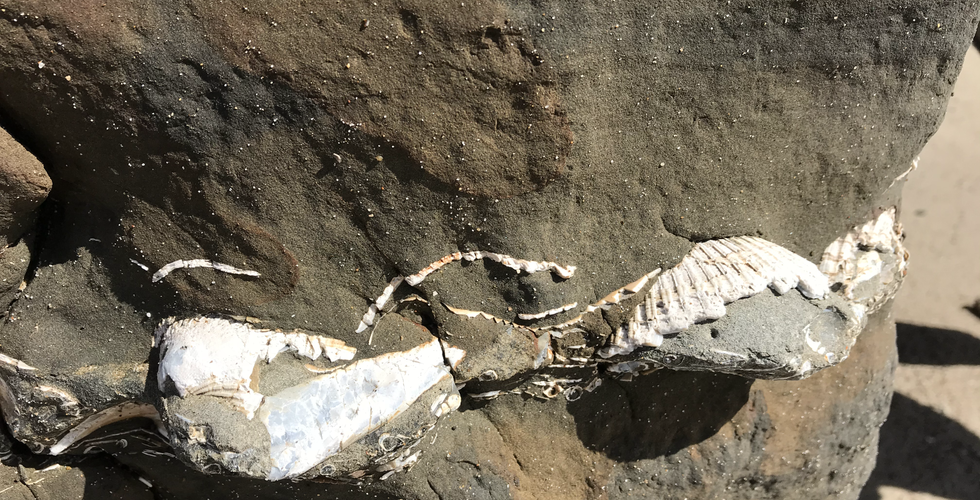Año Nuevo Fossils
- John Teravskis (Mr. T)

- Mar 7, 2021
- 2 min read
Last Friday, my daughters and I took the day off and went to the beach. It was our first outing

since COVID started a year ago. We went to Año Nuevo State Park on the Pacific Coast in California, about 25 miles north of Santa Cruz. It was a lovely day and we were enjoying the sun, surf, and the smell of the salt air while beach combing. We would find shells, interesting sea weed specimens, and there were many beautiful rocks polished by the surf and sand.

However, one rock specimen caught our eyes; it had the most unusual patterns in it. Upon closer inspection, we realized that these patterns were actually fossilized shells. The rocks contained an abundance of bivalves (clam-like shells) and snail shells of many different shapes and sizes. The rocks were smoothed and rounded from being tumbled in the surf. We first found smaller shell-containing rocks being deposited on the beach by the waves. We then found a pile of larger rocks up against the sea cliffs. This caused us to look up and were we ever surprised to find something very similar to what we had observed in the Grand Canyon - sandstone strata containing very distinct and flat layers of marine shells. We even found a sponge specimen almost identical to the ones we identified in the Kaibab formation.

But is that what we see today? Shells accumulating on the beach just waiting to be covered by sand? Not exactly. Shells are deposited on the beach and they are covered by sand; but not in thick, flat, linear deposits several inches thick. Beach action is constantly churning, eroding, and depositing. Waves and tides will not allow shells to remain in a thick layer for long. Instead, the pounding surf and abrasive sand grind shells into fragments and distributes them at random. If you are a beach comber, you know that it is extremely rare to find the "perfect" shell specimen, because of the destructive power of the waves and sand. However, the layers of shells we observed in the sandstone were largely intact and whole, except for those on the outside of the rock exposed to the waves and erosion forces. I believe that what we are looking at is a testimony to a global flood that caused living marine organisms to be accumulated, sorted, deposited, and buried in a short period of time. Do the shell layers in the sandstone beach cliffs at Año Nuevo State Park prove the Genesis flood? No, they do not. But, they do corroborate the erosion and sedimentation that would have accompanied such a flood. It is also interesting to note that the deposited material at this location had many of the same characteristics as the marine shells and organism fossils observed at the Grand Canyon as well as in many other parts of the world.
Next time you are on an outing, keep your eyes open. God has placed around us many testimonies to validity of His Word. You just have to look for them!



















Comments